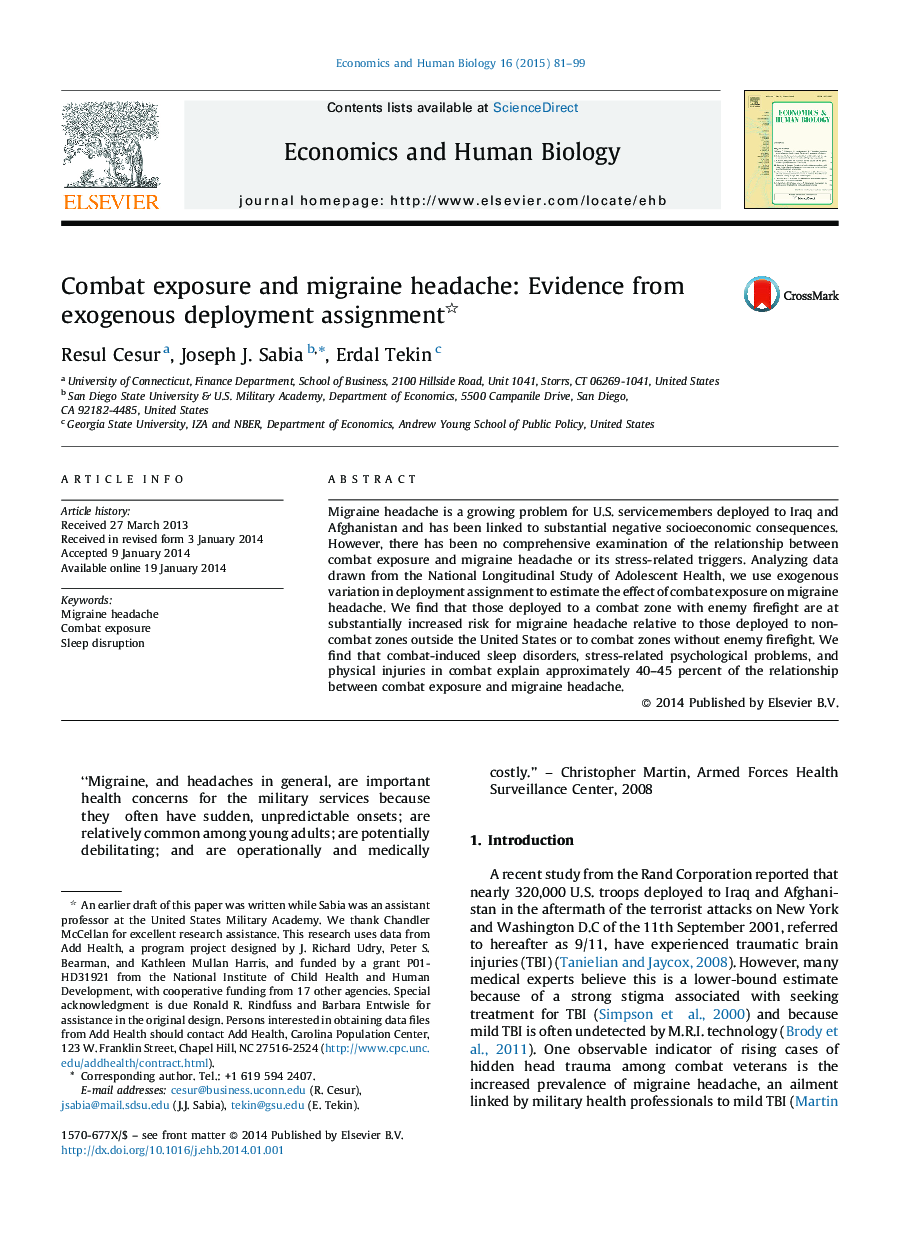| کد مقاله | کد نشریه | سال انتشار | مقاله انگلیسی | نسخه تمام متن |
|---|---|---|---|---|
| 5056920 | 1476563 | 2015 | 19 صفحه PDF | دانلود رایگان |

• Migraine headache is a growing problem for U.S. servicemembers deployed to Afghanistan and Iraq.
• Using exogenous variation in overseas deployment assignment, we estimate the effect of combat exposure on migraine headache.
• Results indicate that those deployed to a combat zone with enemy firefight are at substantially increased risk for migraine headache.
• Combat-induced sleep disorders, stress-related psychological problems, and physical injuries in combat explain 40–45 percent of the relationship.
Migraine headache is a growing problem for U.S. servicemembers deployed to Iraq and Afghanistan and has been linked to substantial negative socioeconomic consequences. However, there has been no comprehensive examination of the relationship between combat exposure and migraine headache or its stress-related triggers. Analyzing data drawn from the National Longitudinal Study of Adolescent Health, we use exogenous variation in deployment assignment to estimate the effect of combat exposure on migraine headache. We find that those deployed to a combat zone with enemy firefight are at substantially increased risk for migraine headache relative to those deployed to non-combat zones outside the United States or to combat zones without enemy firefight. We find that combat-induced sleep disorders, stress-related psychological problems, and physical injuries in combat explain approximately 40–45 percent of the relationship between combat exposure and migraine headache.
Journal: Economics & Human Biology - Volume 16, January 2015, Pages 81–99